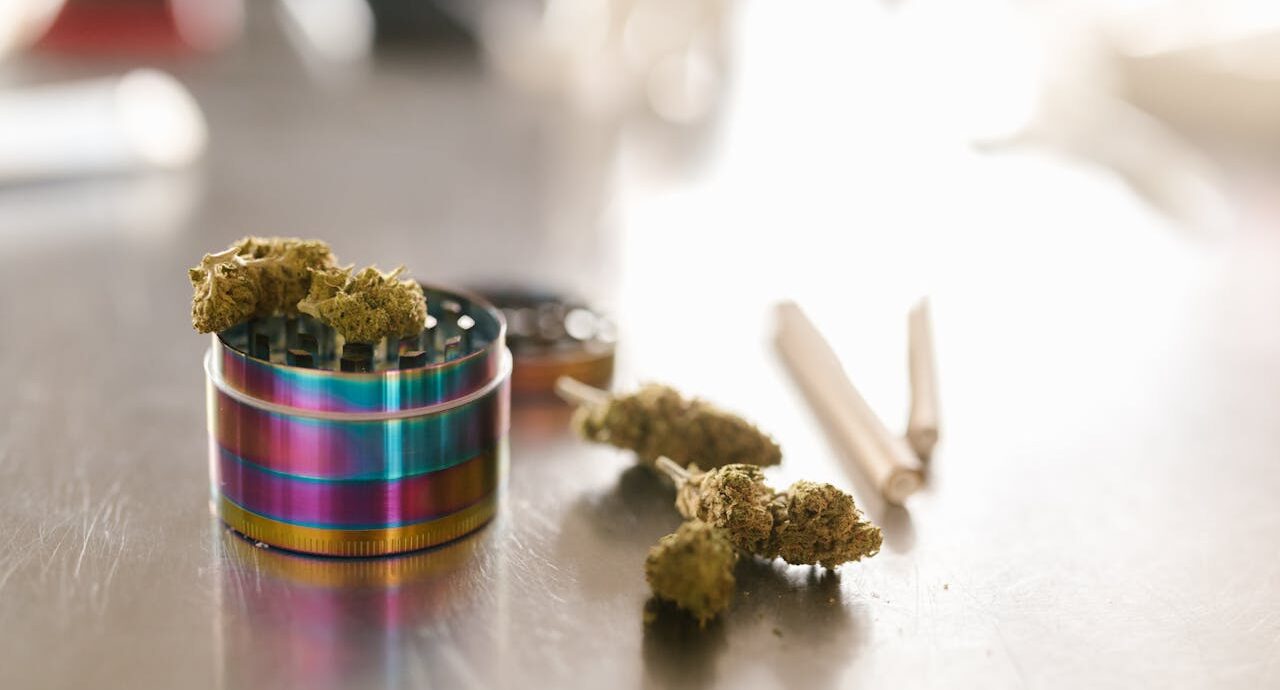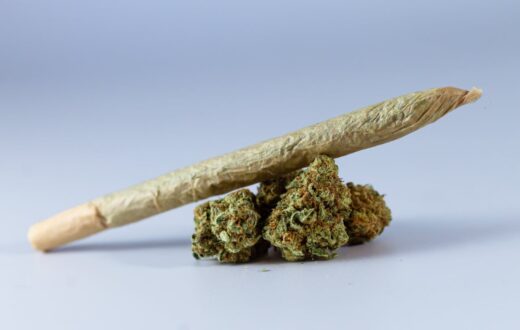Introduction to Blueberry Widow Strain
The Blueberry Widow strain is a captivating hybrid within the cannabis community, renowned for its remarkable genetic background and distinct characteristics that appeal to both novice and experienced growers. This strain is a harmonious blend of two prominent varieties: the fruity Blueberry and the highly acclaimed White Widow. The marriage of these genetics results in a unique phenotype that embodies the best traits from both parent strains.
The origins of Blueberry Widow can be traced back to the United States, where it was meticulously developed to create a cannabis strain that offers a balanced experience. The Blueberry parent contributes its sweet, berry-like flavor profile and relaxing effects, while the White Widow lends its renowned potency and euphoric high. This fusion not only enhances the overall sensory experience but also increases the strain’s adaptability in various growing conditions, making it an appealing option for cannabis growers around the globe.
In terms of flavor, Blueberry Widow is celebrated for its luscious blueberry notes, complemented by earthy undertones inherited from its White Widow lineage. This delightful combination makes for a pleasurable smoking experience, enhancing its popularity among users seeking a flavorful choice. Moreover, the strain boasts impressive potency, often measured with high THC levels, which enhances its appeal for those looking to experience both recreational and medicinal benefits.
When cultivated properly, Blueberry Widow can yield significantly, making it a worthwhile addition to any grower’s repertoire. Its growth characteristics are conducive to both indoor and outdoor environments, and with the right care, it can thrive, offering a bountiful harvest. This combination of flavor, potency, and yield potential positions the Blueberry Widow strain as a favorable choice for those eager to learn how to grow Blueberry Widow strain successfully.
Ideal Growing Conditions for Blueberry Widow
When cultivating the Blueberry Widow strain, it is crucial to understand the optimal growing conditions that will contribute to its successful development. This strain thrives in a temperate climate, where the temperature typically ranges between 70°F to 80°F (21°C to 27°C) during the day. Nighttime temperatures can drop slightly, but it is advisable to keep them above 60°F (16°C) to avoid any stress on the plant. For outdoor growers, selecting a location that receives ample sunlight is vital, as this strain requires around 6 to 8 hours of direct light daily to fully express its growth potential.
Humidity plays a significant role in the development of the Blueberry Widow strain. Young plants flourish in an environment with 65% to 70% humidity, whereas mature plants prefer a lower range of 40% to 50%. Excess humidity can lead to mold and mildew, particularly during the flowering stage, which is critical for developing high-quality buds. To maintain appropriate humidity levels, using dehumidifiers in indoor setups or selecting well-ventilated outdoor locations can prove beneficial.
Light quality is another key factor influencing how to grow Blueberry Widow strain effectively. Employing full-spectrum LED or HID lights indoors can replicate natural sunlight conditions, which promotes healthy vegetative growth and enhances flower production. When growing outdoors, ensuring the plants receive sufficient sunlight throughout their growth cycle will significantly impact overall yield and potency.
In conclusion, by maintaining the ideal temperature, humidity, and light conditions, growers can maximize the yield and quality of the Blueberry Widow strain. Understanding these environmental factors is essential for achieving successful cultivation, whether it be indoors or outdoors.
Nutrient Requirements and Soil Composition
The Blueberry Widow strain, noted for its compelling flavors and effects, thrives best in nutrient-rich environments. To achieve optimal growth, it’s crucial to understand the essential nutrients this strain requires. During the vegetative stage, Blueberry Widow plants benefit significantly from higher levels of nitrogen, which promotes robust growth and green foliage. As plants transition into the flowering stage, phosphorus and potassium become key players, enhancing bud development and overall yield.
In terms of soil composition, a well-aerated, well-draining organic soil mix is ideal for cultivating Blueberry Widow. A pH level between 6.0 and 7.0 is necessary for maximum nutrient absorption. Soils that are too acidic or alkaline can hinder growth, leading to nutrient deficiencies. Incorporating organic elements such as compost or worm castings can improve soil structure and provide slow-releasing nutrients, thus supporting healthy plant development.
Fertilizers play an important role as well, and growers often face the decision of choosing between organic and synthetic options. While organic fertilizers, such as fish emulsion and bat guano, offer a natural approach to nurturing plants, synthetic fertilizers can yield quicker results and are usually more concentrated. It is essential to monitor the plants closely regardless of fertilizer choice, as symptoms of over-fertilization or nutrient lockout can appear if the plants are stressed.
Regular testing of soil pH and nutrient levels will help maintain an optimal growing environment. For those looking to cultivate Blueberry Widow, understanding how to grow this strain effectively involves a fine balance of nutrient management and soil health. Consistently checking on these elements will ensure the plants remain healthy and productive throughout their growth cycle.
Germination and Seedling Stage
Germination is a critical phase in the cultivation of the Blueberry Widow strain, as it sets the foundation for healthy growth. To achieve successful germination, growers can utilize various methods, including soaking seeds or employing the paper towel technique. Soaking the seeds in water for about 24 hours can help to soften the seed coat and stimulate the germination process. Alternatively, the paper towel method involves placing the seeds between damp paper towels and keeping them in a warm, dark environment until they sprout. This method allows for monitoring the seeds closely and ensuring adequate moisture levels.
Once the seeds have successfully germinated and the seedlings emerge, the next challenge is to provide optimal care during this crucial seedling stage. The young plants should be kept under controlled lighting conditions; a consistent light cycle of 18 hours of light and 6 hours of darkness is suitable for vigorous growth. Using a light source like fluorescent or LED grow lights can help simulate natural sunlight and promote the healthy development of the plants.
Watering the seedlings requires careful attention to avoid over or under-watering. The substrate should be kept moist but not saturated; typically, watering should be carried out when the top inch of the soil feels dry. Additionally, maintaining an optimal temperature range of 70-75°F (21-24°C) will ensure that the tender seedlings thrive. This temperature control, combined with a gentle ventilation strategy, minimizes the risk of disease and promotes healthy growth.
In summary, understanding how to grow Blueberry Widow strain begins with effective germination techniques and proper care during the seedling stage. By providing the right light exposure, consistent watering, and appropriate temperature, growers can set their plants on a path to robust growth and ample yields.
Vegetative Stage Care
The vegetative stage is a critical phase in the growth of the Blueberry Widow strain, typically lasting between four to eight weeks, depending on the grower’s aims and environmental conditions. During this stage, the plants focus on developing a robust structure, which is pivotal for the health and productivity of the plant during the flowering phase. Proper care during this time can significantly influence the overall yield and quality of the harvest.
One essential aspect of caring for Blueberry Widow during the vegetative stage is pruning. Regularly trimming away excess leaves and branches not only encourages airflow but also directs energy toward the main stems. By removing any unwanted foliage, growers can foster a healthy environment that reduces the risk of mold or pests, while also encouraging the plant to divert its resources into producing bud sites.
Additionally, training techniques such as topping and low-stress training (LST) can be effectively employed to shape the plants. Topping involves cutting off the top of the main stem to encourage lateral growth, resulting in a bushier appearance. This not only increases the number of colas but also helps to maximize light distribution. On the other hand, LST involves gently bending and tying down branches to promote horizontal growth, which can improve light exposure throughout the canopy.
Nutrient balance is another crucial element in the vegetative stage of the Blueberry Widow strain. A nutrient mix rich in nitrogen is essential to support vigorous leaf and stem growth. Growers should pay close attention to pH levels in their growing medium to ensure optimal nutrient uptake. Regular monitoring and adjustments are vital to maintaining healthy foliage and promoting strong root development, which will act as the foundation for a fruitful flowering phase.
Flowering Phase: Symptoms and Care Techniques
The flowering phase of the Blueberry Widow strain is a crucial period in its growth cycle, requiring keen observation and targeted care techniques. This phase typically begins around eight weeks into the growth cycle, when the plants will often display distinct changes in structure and appearance. Growers can identify the onset of flowering by noticing the development of pre-flowers, which are small, hair-like structures located at the nodes between the leaves and the stems. These signs indicate that the plant is transitioning from its vegetative stage to flowering.
The duration of the flowering phase for Blueberry Widow usually spans 8 to 10 weeks, depending on the specific phenotype and environmental conditions. During this time, it is essential to adjust the light schedule to 12 hours of light and 12 hours of darkness to emulate natural light cycles. This change significantly contributes to the production of buds, unlocking the plant’s potential for robust yields.
Nutrient management also plays a pivotal role during the flowering phase. Growers should switch to bloom-specific fertilizers, which are richer in phosphorus and potassium, promoting bud development. It is essential to monitor the feeding regimen closely, as over-fertilization can lead to nutrient burn and adversely affect flowering progress. Additionally, pests and diseases pose risks during this sensitive phase. Regularly inspecting plants for pests like aphids or spider mites, and implementing preventative measures can help mitigate these issues. Using natural insecticides or introducing beneficial insects, such as ladybugs, can be effective solutions. Furthermore, maintaining adequate air circulation helps to minimize the risk of mold and mildew.
Overall, understanding how to grow the Blueberry Widow strain through its flowering phase can lead to healthier plants and ultimately a more abundant harvest. Attention to detail in the light cycles, nutrient adjustments, and proactive pest management are key to thriving in this critical stage of growth.
Harvesting Techniques for Optimal Yield
Harvesting the Blueberry Widow strain at the right time is crucial for ensuring both maximum yield and the best possible flavor profile. Determining the optimal moment for harvesting involves closely monitoring the trichomes on the buds. Typically, growers should aim to harvest when about 70-80% of the trichomes have turned from clear to a milky white or amber color. This transformation indicates the peak potency of cannabinoids, enhancing both the effects and flavors of the harvested cannabis.
Once you have determined that the plants are ready for harvest, careful cutting and handling are essential to preserve the quality of the Blueberry Widow strain. Use sharp, clean pruning shears to cut the branches just above a node where healthy leaves meet the stem. It is advisable to harvest during the cooler parts of the day, preferably in the morning, to reduce the degradation of terpenes and minimize moisture that can foster mold growth.
After harvesting, the next steps involve trimming and drying the buds to optimize their flavor and potency. Begin by removing the larger fan leaves, leaving some smaller leaves on the buds to protect them during the drying process. This will help in retaining vital oils and enhancing the final taste of the Blueberry Widow strain. The trimmed buds should be hung upside down in a dark, ventilated area with a stable temperature and humidity level. Ideal drying conditions generally range between 60-70°F and 45-55% humidity. Allow the buds to dry for about 7 to 14 days, after which they should feel dry to the touch but still slightly sticky. Proper dryness sets the stage for curing, which further improves the overall quality, flavor, and cannabinoid preservation.
Employing these harvesting techniques can significantly impact the final outcome of your Blueberry Widow strain, allowing growers to enjoy a robust and flavorful product.
Common Challenges and Solutions
Growing the Blueberry Widow strain can bring about a variety of challenges that, if not addressed, can negatively impact the health and yield of the plants. One of the most common issues facing growers is the presence of pests. Aphids, spider mites, and other insects are notorious for infesting cannabis plants, including the Blueberry Widow strain. To mitigate this problem, it is essential to implement an integrated pest management approach. Utilizing insecticidal soaps or neem oil can effectively manage pest populations while being safe for the plant. Regularly inspecting your plants for early signs of infestation will enable timely interventions.
Another significant challenge encountered by growers is the risk of mold and mildew, particularly in humid environments. Blueberry Widow, like other cannabis plants, can be susceptible to these fungal infections, especially during the flowering stage when the buds become dense and moisture-retaining. To prevent mold, ensure proper air circulation around your plants by strategically placing fans and maintaining optimal humidity levels. Additionally, monitoring your watering practices will help avoid excessive moisture, which can contribute to mold growth.
Nutrient deficiencies are another concern that growers of the Blueberry Widow strain may encounter. Symptoms such as yellowing leaves or stunted growth can indicate inadequate nutrient uptake. To address this, it is crucial to conduct regular soil tests and adjust your feeding regimen accordingly. A balanced nutrient solution specific to cannabis, rich in nitrogen, phosphorus, and potassium, will provide the necessary support. Furthermore, ensuring proper pH levels in the soil will promote better nutrient absorption, consequently leading to healthier plants.
By acknowledging these common challenges and applying the suggested solutions, growers can enhance their experience while cultivating Blueberry Widow. This proactive approach not only ensures a thriving plant growth cycle but also leads to higher yields and better quality cannabis. Understanding how to grow the Blueberry Widow strain successfully is a process of continual learning and adjustment, requiring both diligence and adaptability.
Conclusion and Final Thoughts
In this comprehensive guide on how to grow Blueberry Widow strain, we have highlighted essential aspects that contribute to successful cultivation. This high-yield strain is renowned for its unique flavor profile and robust growth characteristics, attributes that make it appealing for both personal and commercial growers alike. A suitable growing environment, whether indoors or outdoors, plays a crucial role in ensuring that the blueberry widow plants achieve their full potential. Adequate lighting, temperature control, and humidity management are vital elements that significantly enhance the overall health and productivity of the plants.
Moreover, understanding the plant’s nutrient requirements and watering schedule is important for fostering an optimal growth environment. By regularly monitoring these factors, growers can address any issues proactively, thus maximizing the development of their blueberry widow strain. Additionally, employing proper pruning techniques can greatly increase air circulation and light penetration, which in turn supports healthy bud growth and development.
As you embark on your growing journey, remember that experimentation is a key aspect of cultivation. Each grower brings their own knowledge and style to the process, which can lead to unique approaches that yield remarkable results. Whether you are growing for personal enjoyment or aiming to enter the commercial market, the rewards of successfully cultivating the blueberry widow strain are substantial. Observing the growth process, from seedling to flowering, can be immensely satisfying and educational.
Conclusively, embrace the challenges of growing the blueberry widow strain with enthusiasm and curiosity. The knowledge gained through this process not only enhances your skills as a grower but also contributes to the joy of sharing your harvest with others. Happy growing!













